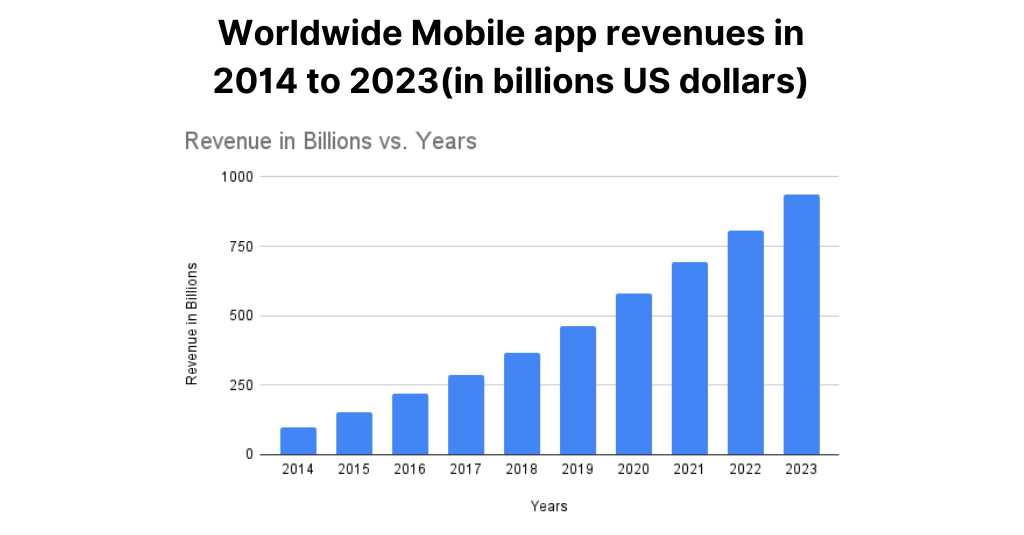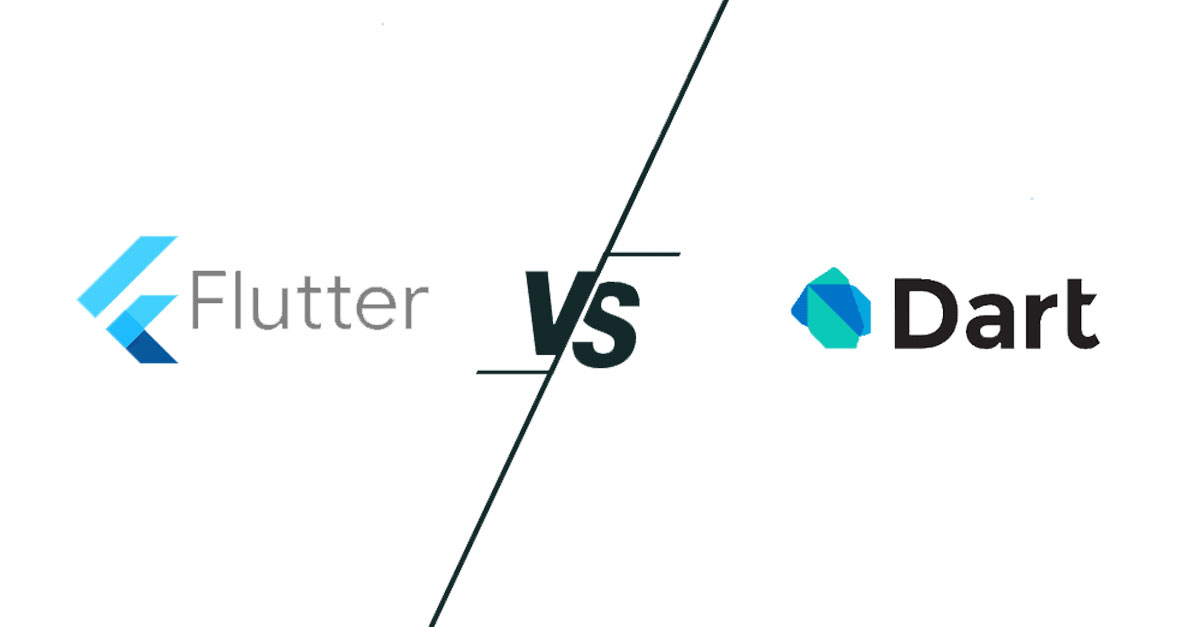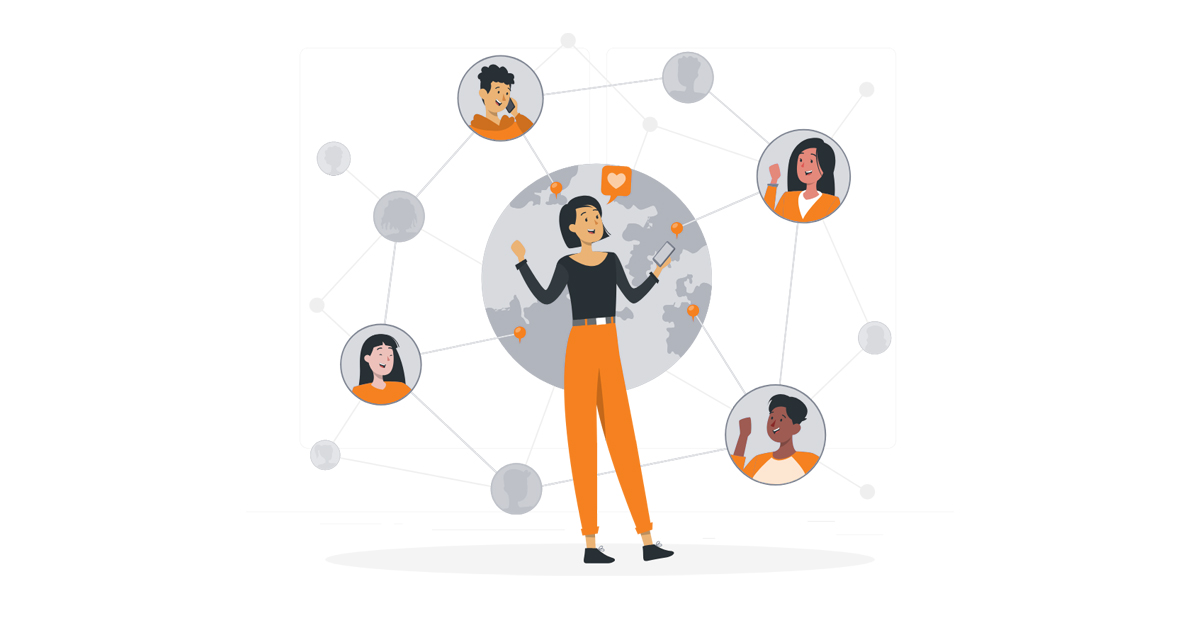Mobile app development is not just limited to games and banal functional apps. Apps, now are the core market for delivering information, utility, and functionality on a device that commands the most attention, and customer engagement out of any other.
So, it seems rather prudent for businesses to focus on bringing their services on an app.
It’s an excellent way to broaden your target audience’s reach and increase your online presence.
That said, building an app is not as simple as it seems to be. In spite of no-code platforms, making seamless Mobile apps with unique features built on iOS and Android with a better user experience is still a hassle.
Or shall we say, a task with quite a few variables.
Mobile apps are expected to generate 935 billion US dollars in revenue through in-app advertising and paid downloads by 2023.

Moving from that notion…
Have you ever noticed what tools & technologies are used to build mobile apps?
Or have you mulled over the excessive features, and ideas that traverse the app market right now?
If you’d had you would know that even after making that app, you have a tough time getting it adopted by willing customers.
So, the question – how can you make your app the best of the best?
To answer this, you’ll need some perspective and some idea of a suitable mobile app development framework. A framework will provide faster app development scope while not prohibitively expensive to invest in.
Dart and Flutter are introduced as viable alternatives to the JavaScript ecosystem to the app developer community and have opened up quite a lot of possibilities and potential in the app development market. These two app development technologies can meet your requirements. And to choose one of these based on your business goals, let’s go over the features and benefits of both frameworks.
Let’s start with the understanding first.
What is Flutter?
Flutter, which Google first introduced in 2017, quickly became one of the fastest application development platforms. Flutter is the third most popular framework. It is an open-source UI framework for creating high-level native Android and iOS interfaces.
Its feature-rich and productive user interface frameworks enable developers to create cross-platform applications easily. It is similar to React Native in that it supports reactive and declarative programming styles. And there is no need to use a bridge to improve overall performance and start time in a Flutter application.
Additionally, Flutter is a portable user interface toolkit that includes various tools and widgets. It provides a platform for developers to quickly build and deploy natively compiled, visually appealing applications for multiple platforms.
Quick Stats on Flutter App Development
According to Google Trends, Flutter will be the second most popular programming language in 2020, trailing React Native to develop customized cross-platform mobile apps.
Google, GROUPON, Alibaba, & eBay group have all chosen Flutter to build robust apps in a short period.
According to a Stackoverflow poll, Net Core and Torch are the best.
Features of Flutter Core
Here are a few vital features of the Flutter framework in app development are—
a) Open-Source Platform
Flutter is a Google-developed and supported open-source platform. With the help of a reputable Flutter app development company, you can turn your innovative app idea into a perfect solution in a cost-effective manner.
b) Hot Reloading
The Hot Reload feature of Flutter is a valuable addition to the app architecture that allows developers to see their results on the screen in real-time. As a result, developers can add features and fix bugs without running out of memory.
c) Rich Widgets
The Flutter platform’s core concept is based on widgets. A Native app developer can create an elegant and expressive user interface by combining various widgets by the client’s business model. Flutter app developers can create custom widgets while still ensuring the application’s native performance.
d) Efficient User Interface
Flutter is a portable and well-organized GPU (Graphics Processing Unit) rendering user interface that allows developers to work with multiple interfaces.
Google Firebase Assistance
The Flutter framework enables developers to take advantage of Google’s Firebase back-end support. Developers can use this support to create scalable apps.
Benefits of Flutter
1. Simple to Use
The Flutter-Dart coding combination is simple to use and learn. With significantly less code, you can create fully functional apps. The Flutter framework ensures a quick & easy installation that takes less than 30 minutes.
2. Create applications for All Platforms
Whether you hire a Flutter application developer or build an app with the Flutter framework, you will benefit from creating a highly adaptable and scalable product. Flutter can be built for iOS, Windows, Linux, Android, macOS, and the Web, among many other platforms.
3. Build Your MVP Fast
Now that the framework is in place, you can use the minimum viable product to represent your site’s basic functionalities and operations (MVP). Flutter assists you in building an MVP that is platform-agnostic and provides a high-quality user experience.
4. Share Single Codebase
Flutter enables developers to create a robust enterprise-grade app using a single code base, whether iOS or Android. It saves developers time on code management because they don’t have to write separate code for both platforms.
5. Excellent Community Support
A thriving community of active developers can assist developers in quickly resolving issues, saving them time and effort. Furthermore, Google supports and maintains Flutter, making the platform extremely dependable. As the community continues to organize meetups and other events worldwide, it is simple to discuss new features and clear up any confusion about Flutter.
What is Dart?
Dart is an open-source, platform-independent, & object-oriented programming language that Google released in 2011. It allows you to develop iOS & Android apps from a single codebase. This language has several features that a software developer will find helpful.
Dart can compile into native code for mobile and desktop platforms and JavaScript. What’s great about it is that it doesn’t need an additional bridge to communicate with the platform like, say, React Native because of the direct compilation.
It is a client-side programming language that provides a wide range of app development utilities such as design features, dynamic typing, interface, classes, and optional typing. Dart is designed to work on both the server and the browser.
Feature of Dart Core
a) Extensive Library
Dart includes several useful pre-built libraries such as Math, convert, HTML, SDK, core, etc. Dart also allows developers to organize Dart code into required libraries with proper name-spacing. Using the import statement, developers can reuse the libraries.
b) Versatile Compilation
Dart provides the resiliency to compile code at breakneck speed. It supports two types of compilation processes: JIT (Just in Time) and AOT (Always on Time) (Ahead of time). Developers can easily use this to transmit the Dart programming language and run it efficiently in modern web browsers.
c) Security-based Language
Dart is a type-safe programming language, which means that developers can use it for runtime and static type checking to ensure that a variable’s value always matches the static type of the same variable.
d) Lage Community
Dart has a large community of active developers with in-depth language knowledge. This community is made up of developers from all over the world. So, if you run into any issue during coding with Dart, you can always rely on someone to help you.
Benefits of Dart
1. Simple to Use
Dart is an elementary language that anyone can learn quickly. Dart app developers who understand the fundamentals of OOPS programming can promptly jump into Dart’s Java-like syntax and create an app. It provides a simple learning ecosystem where developers can easily understand the framework’s tools and terminologies while accessing various libraries.
2. High Performance
When you use Dart as a programming language, you are taking a step toward better app performance. Dart includes features such as JIT and AOT that improve the language’s implementation. Developers can take advantage of the Hot Reload feature with JIT, while AOT aids in the application’s quick start-up and improved execution.
3. Flawless Documentation
As developers who have used Dart, the language is simple to learn and has excellent documentation. It is convenient to start with the coding process and has excellent community support. It offers simple syntax, accessible features, and helpful guides that assist developers through their training process.
4. Write A Program Without Configuration & Installation
Dart has a straightforward user interface known as DartPad. This interface eliminates the need to configure or install this framework before using it. You just have to write down the Dart code and then click the ‘Run’ command to execute it.
Flutter vs. Dart: A Comparison
License
| Parameters | Flutter | Dart |
|---|---|---|
| Programming Language | Dart | Dart |
| Initial Release Date | 2017 | 2013 |
| Developer | ||
| Open Source | Yes | Yes |
| Free to Use | Yes | Yes |
| Description | Open-Source UI SDK | Client-side programming language for web & mobile apps |
| Category | Framework | Programming language |
| License | BSD 3-Clause “New” or “Revised” License | BSD 3-Clause “New” or “Revised” License |
| Popular apps | Philips MGM Resorts ByteDance |
Flutter |
To Wrap Up
Now that you know the features & benefits of two industry-leading app development tools—Flutter and Dart.
Which one will you use to build a mobile app for your business?
Flutter, a relatively new but already popular framework, will undoubtedly continue to grow and improve as the development community grows. Its advantages for cross-platform development are undeniable, and ignoring it as a tool for app development would be a huge mistake.
On the other hand, Dart would be the best choice for developing a software product for various platforms – both an iOS app & an Android app. With the AngularDart framework for web and the Flutter framework for native mobile apps, the Dart team has spent the last year making it the premier language for client-side development.
Before making a final decision, make sure you discuss with your team and have gone over the project requirements.
Netsmartz always recommends the best-fit platform based on your business goals & user expectations. Whether we work with a startup or a large enterprise, results and business growth are the pillars of defining your success. Contact us now.
Summary
Kickstart Your Project With Us!
Blog
Popular Posts
CONTACT US
Let's Build Your Agile Team.
Experience Netsmartz for 40 hours - No Cost, No Obligation.
Connect With Us Today!
Please fill out the form or send us an email to
 Don't Miss Out:
Don't Miss Out: 







